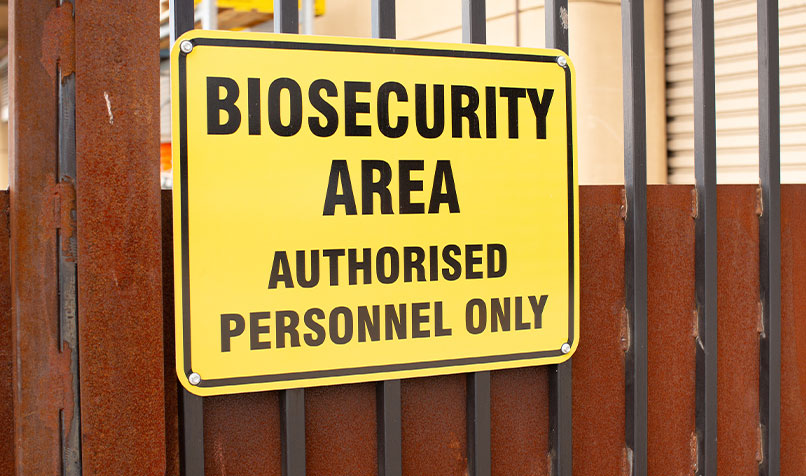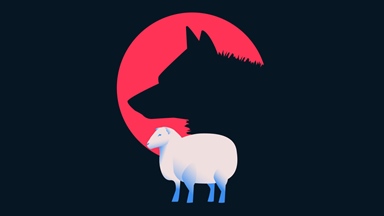Loading component...
At a glance
- A Productivity Commission report finds industry levies are proliferating in Australia.
- Little is known about the impact of levies on productivity growth and industry behaviour.
- Issues with industry levies include design, cost of collection and, in some cases, double taxation.
American author John Steinbeck was possibly thinking of Australia’s new Wine Grapes Levy, introduced in 1929, when penning his novel The Grapes of Wrath in the 1930s.
The Wine Grapes Levy, Australia’s first industry levy, was introduced by the Stanley Bruce Government to help finance marketing, research and development for the rapidly growing grape industry.
Australian industry levies were traditionally seen as a way to ensure that agricultural, fisheries and forestry producers contributed to the funding of collective services and strategies activities within their respective sectors.
Today, increasingly, some of these levies are generating widespread industry wrath.
After progressively being rolled out across other agricultural sectors by consensus for similar purposes as the Wine Grapes Levy, which still exists, levies have since been imposed by federal, state and territory governments. The levies apply to a broad range of sectors including telecommunications, banking, insurance, energy, manufacturing, gambling, insurance and construction.
After numbering just four in 1960 and 26 in 1980, there are now 248 individual industry levies that collectively raise about A$11 billion per year in Australia – more than six times the revenue raised from tariffs.
These industry levies are collected and administered by about 70 different state, territory and Commonwealth departments including government-controlled levy recipient bodies.
A growing body of inefficient taxes
A detailed research paper, Towards Levyathan? Industry levies in Australia, was published by the Productivity Commission in December 2023. The paper notes the absence of guidelines for assessing the policy value of individual industry levy proposals, and that little is still known about the collective impact of levies on productivity growth, industry behaviour and the Australian economy. In addition, it found that industry levies represent a growing form of micro-taxation in Australia.
Industry levies are effectively the “long tail” of Australia’s tax system, where 10 taxes collect more than 90 per cent of overall tax revenue, and industry levies raise less than 2 per cent, the paper says.
For example, the 2022–23 Final Budget Outcome shows that A$666 million was raised from about 70 different agricultural levies. A further A$1.52 billion was raised from the Major Bank Levy, which has been imposed on Australia’s five largest banks since 2017, out of total taxation receipts of A$601.3 billion.

Deputy chair of the Productivity Commission, Dr Alex Robson, says that industry levies are being charged by more jurisdictions to fund a growing number of policy goals, and some have been imposed simply to raise general tax revenue.
“The question really is, are industry levies being designed with any efficient or equitable principles that we usually think about when we think about designing taxes?” Robson says.
“The answer is, basically, we don’t really know, because they don’t tend to be assessed as far as we can see on that basis, and then nobody really goes back and re-evaluates them to see whether they are meeting these principles.
“While many levies are nominally collected to cover the cost of government regulation or mitigate environmental costs, these goals could often be pursued more effectively and efficiently through the broader tax system.
"Taxes work best when they are simple and efficient – but many industry levies are relatively expensive to collect, unnecessarily distort business activity and waste the time and resources of business and government."
“Taxes work best when they are simple and efficient – but many industry levies are relatively expensive to collect, unnecessarily distort business activity and waste the time and resources of business and government.”
The Productivity Commission paper also found that the cost of collection for some levies has been generally higher than the Australian Taxation Office (ATO) cost of 57 cents per A$100 collected.
It has therefore recommended that Australian state and territory governments should weigh the merits of using either the ATO or state revenue offices to collect all industry levies.
Australian Federal Budget 2024-25 summary
Cost recovery
The Australian Government charges non-government entities various levies to recover the costs of providing its range of services.
For example, the Australian Securities and Investments Commission’s (ASIC) industry funding model (IFM) is the means through which regulated entities are charged levies by the regulator to cover its service costs from the previous financial year.
Cost recovery levies are charges imposed when a good, service or regulation is provided to a group of individuals or organisations.
The charges are levied as a tax, but they differ from general taxation because they are meant to be earmarked to fund activities provided to the group that pays the levy.

However, CPA Australia superannuation lead Richard Webb says that lack of transparency has been a criticism for some time.
“We have been consistent about the fact that there are guidelines from the Department of Finance around cost recovery, and cost recovery does include things like industry-funded levies,” Webb says.
“Those guidelines require regulators to publish a Cost Recovery Implementation Statement, which should be published ahead of any consultation on the levies each year, so that we know in advance what they are going to be.
“In recent times, the regulators have interpreted that as publishing before the amounts of levies become due.
I guess you could interpret the guidelines that way in the Department of Finance’s cost recovery guidelines, but I do not think it is in the spirit of that very much.”
Webb also says that ASIC’s IFM remains flawed because of its retrospective charging nature.
"The large entities who used to have financial advisers – and by those I suppose I am referring to the banks most specifically – have left the industry, leaving the cost recovery to the entities that have remained."
In a 2022 submission to Treasury on the ASIC funding model, CPA Australia noted that current industry participants are required to pay for past regulatory and enforcement activities relating to participants who may have been unlicensed, unregulated or are no longer part of the sector.
“When the IFM was initially imposed, it was intended that, as an industry-funded model, it would mean that theoretically the licensees who were creating the biggest regulatory mess would likely be the ones incentivised by larger and larger levies to clean up their mess,” Webb says.
“However, what has happened since then is that the large entities who used to have financial advisers – and by those I suppose I am referring to the banks most specifically – have left the industry, leaving the cost recovery to the entities that have remained.”

Independent economist Saul Eslake says that in many cases, where industry levies have not been implemented, various industry activities are funded out of tax receipts.
“My instinct is that where an activity is undertaken that primarily benefits an industry and the industry wants it to be undertaken, then a levy is an appropriate way of funding it,” Eslake says.
“The alternative, assuming that you want these things to be done, is that they are funded out of income tax or some other source of government revenue, which would in turn mean either that those taxes have to be higher or something else does not get done.”
However, Eslake adds, “there would be other occasions when the industry does not necessarily want what is funded by a levy”.
Biosecurity protection levy

A major issue with industry levies is the prospect of overlaps between new levies and existing levies – which essentially becomes a form of double taxation.
The Department of Agriculture, Fisheries of Forestry (DAFF) states on its website that, each year, it distributes about A$800 million to 18 levy recipient bodies, comprising about A$500 million in levies and charges, and A$300 million in Commonwealth-matching payments for eligible research and development activities.
Currently, more than 50 Acts and legislative instruments underpin the agricultural levy system alone.
Biosecurity activity levies are already collected to fund industry member contributions to Plant Health Australia and Animal Health Australia, while biosecurity emergency response levies are collected under the Emergency Plant Pest Response Deed and the Emergency Animal Disease Response Agreement.
Potentially adding to these will be the proposed new Biosecurity Protection Levy (BPL), first announced in the 2023 Federal Budget, which the government estimates will raise A$50 million annually from 2024–25.
"I guess my instinct is that where an activity is undertaken that primarily benefits an industry and the industry wants it to be undertaken, then a levy is an appropriate way of funding it."
The government’s premise behind the BPL is that primary producers, as significant beneficiaries of biosecurity, should contribute more to maintaining biosecurity protection at Australia’s borders.
The BPL has attracted significant criticism, including from the National Farmers Federation (NFF), the Productivity Commission, the Australian National University and the Office of Impact Analysis.
“Australian farmers already spend millions of dollars each year in existing levies that already incorporate biosecurity spending as well as through managing the pests and diseases on-farm brought to our shores by importers and travellers,” says NFF president David Jochinke.
“By paying another tax towards biosecurity services, they are effectively subsidising foreign competitors who import food products into Australia.
“Along with it being at odds with standard policy design and tax practice, this levy simply is not fair,” Jochinke says.
Australian Government general government sector (cash) receipts ($M)
| Levy | 2021-22 Final budget outcome | 2022-23 Final budget outcome | 2023-24 Estimates | 2023-24 Mid-year economic and fiscal outlook |
|---|---|---|---|---|
| Major bank levy | A$1454 million | A$1525 million | A$1620 million | A$1600 million |
| Agricultural levies | A$626 million | A$666 million | A$586 million | A$598 million |
Building a better system
The Productivity Commission has also recommended that governments restore policy discipline to the introduction of new levies, as well as decisions to maintain existing levies, by being clear about their policy purpose and assessing their costs and benefits relative to available policy alternatives.
On whether there is scope to unwind certain levies and integrate them into the tax system, Robson says it might be time to ask that question.
“To ask it, and answer it, you need a framework, and that is what we have done in our research paper,” he says.
“The extent to which you could consolidate them and integrate them back into the tax system is a bit of an open question.
“We suspect that many of these things are just raising revenue, and they are not doing anything else. On the other hand, there could be others that have a very good public policy justification. The point is, unless you run your ruler over all of them and ask those questions, you are not going to know.”

